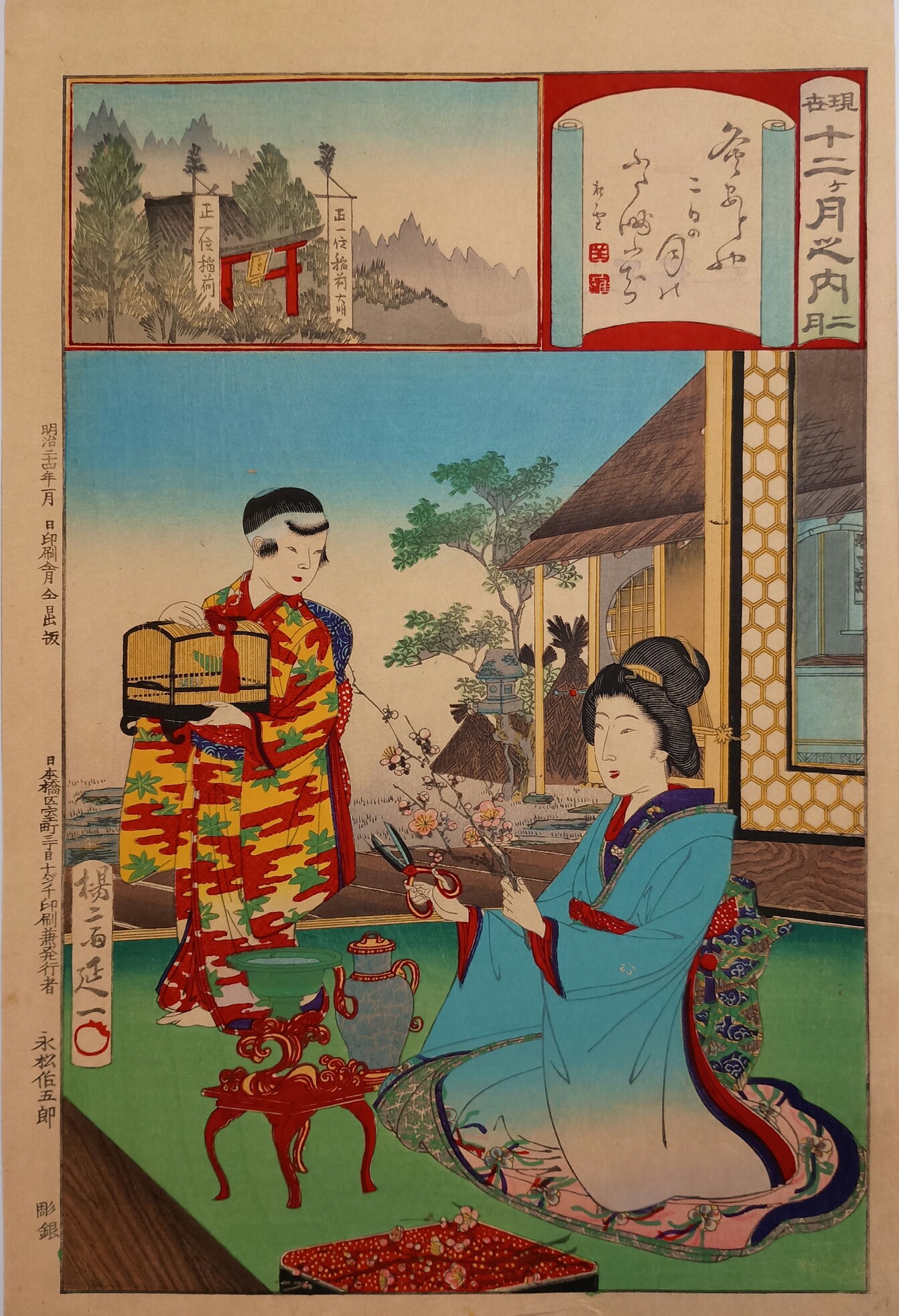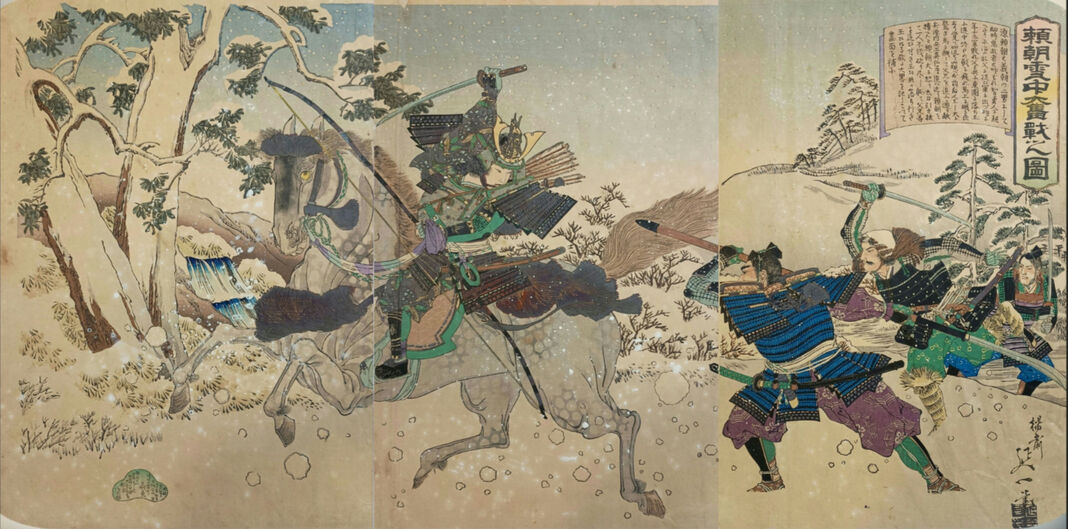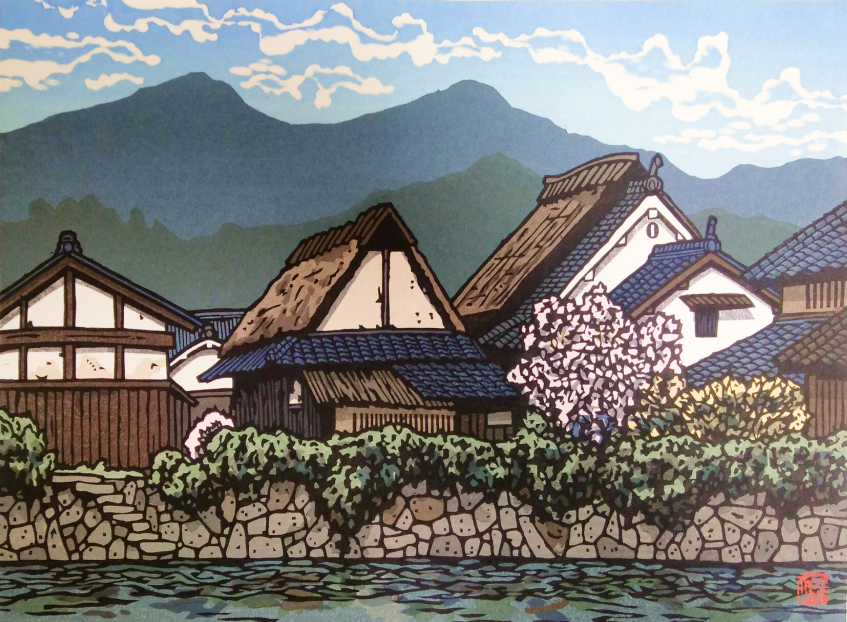Yōsai Nobukazu
1872 ~ 1944Yōsai Nobukazu, also known as Nobukazu Watanabe, was a ukiyo-e artist of the Meiji era, renowned for his detailed, lively, and narrative style.
A pupil of the master Chikanobu Yōshū, from whom he inherited a strong interest in bijin-ga (pictures of beautiful women), Nobukazu developed his own artistic voice,
deeply connected to the visual documentation of modern Japan.
He worked across a wide range of subjects: from senso-e (war prints), for which he is particularly well known, to contemporary historical scenes and the urban transformations
of modernising Tokyo (kaika-e).
During the First Sino-Japanese War (1894 - 1895) and the Russo-Japanese War (1904 - 1905), he produced numerous battle triptychs, celebrating the heroism of the imperial army
and contributing to the wartime propaganda of the period. These works, highly dramatic and full of movement, met the growing demand for patriotic and spectacular imagery, as
traditional woodblock printing faced a decline due to the rise of photography and offset printing.
In both scale and quality, his body of work places him among the last great interpreters of classical ukiyo-e, carrying the tradition into the modern age.

"Twelve Months in Modern Times" is an elegant visual narrative in which each print represents a month of the year through refined family scenes and glimpses of domestic life during a time of rapid transformation. These works preserve the sweetness of ordinary gestures and the cultural identity of a people renewing itself without forgetting its roots. The scene depicts a woman arranging plum blossoms, symbol of early spring and February, while a child brings a birdcage.
USD $190.00

